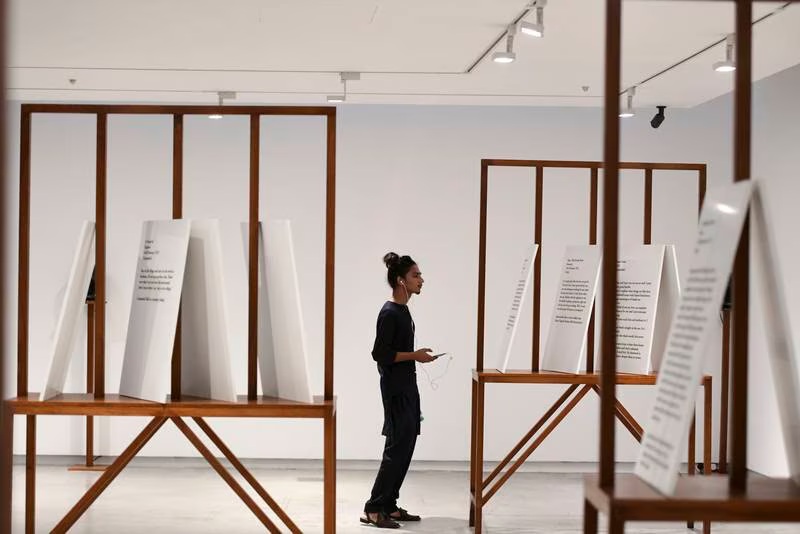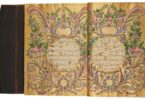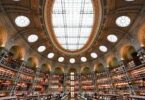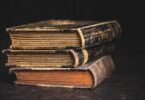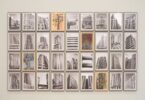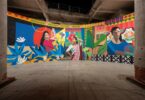Afshan Ahmed
There’s a delicate and relatable struggle of likeness and diversity in the 179 artworks laid out at Al Mureijah Art Spaces exhibition, part of Sharjah Art Foundation’s Collection.
It’s the tightrope that every diasporic individual finds themselves on; the need to carve out an identity shaped by specific experiences and yet seek similarities in narratives with others.
In this new exhibition, titled In the Heart of Another Country: The Diasporic Imagination Rises, which draws from the foundation’s expansive archive and is on view until September 24, works from 1935 sit alongside more recent pieces to introduce the dual aspect of variety and commonalities of longing and rootedness that unite diaspora artists through time.
First showcased at the Deichtorhallen art centre in Hamburg, Germany, in November, the Sharjah version has been developed with recent acquisitions and other restored artworks from more than 60 artists. Mixed-media artworks ranging from photographs, architectural structures, soundscapes, drawings on paper and paintings are arranged as self-contained chapters in six different galleries but narrate a kinship among these international artists and the influences shared across generations.
Two newly restored paintings by the late Lebanese-American painter Helen Khal alongside the works of Huguette Caland – Khal’s best friend – are presented for the first time. Other new acquisitions include works by Sonia Balassanian, Anuar Khalifi, Hayv Kahraman and Mohan Samant.
:quality(70)/cloudfront-eu-central-1.images.arcpublishing.com/thenational/LZ5PV3DBTNDM5JB7MVY7GG65FA.jpg)
Omar Kholeif, the director of collections and senior curator at the foundation, began working on the group show during his post-doctoral research in 2011. He was invited by the Deichtorhallen to develop it into an exhibition in 2016, at the same time that he was presented with the opportunity to co-curate the 14th Sharjah Biennial. He says this allowed him to dig through the foundation’s collection and discover the significance of the emirate as a historic meeting point for the artists that he was researching and wanted to present.
“The inspiration behind the exhibition emerged from historically exploring the false assumption that there is a ‘singular’ form or aesthetic that denotes art of the ethnic global majority and that reflects the very different experiences of being a diasporic individual,” says Kholeif.
“In the age of constant movement whether physical or virtual, how could this be the case? I wanted to upturn this idea and to reclaim the diasporic experience as a meaningful condition this is contoured by the specific experiences and contexts of artists – not an imaginary that is imprinted upon them.”
He says that many artworks featured in the exhibition were made or conceived in Sharjah and “often outside the bounds of the artists’ originally conceived site of home”.
About 20 per cent were commissioned or produced by the foundation, with the exhibition focusing on overlooked artists and historical figures to fill in the gaps in representation throughout history.
“Here, they find voice, solace and community,” he adds. “Wherever you roam in the exhibition and whatever theme you are engaging with, you will find artists not claiming difference, but rather, finding solidarity amongst and with one another.”
The exhibition takes its title from the late artist and author Etel Adnan’s memoir of the same name. The works have been selected to create a dialogue, not just with one another but to blur the lines between the internal and external surroundings of the gallery itself.
:quality(70)/cloudfront-eu-central-1.images.arcpublishing.com/thenational/3X6KFN4MG5GEVODO7GQCOE6CVQ.jpg)
Each gallery has a theme, opening with Architecture by Other Means, which introduces the notion of belonging to a place through geometry, minimalism and architectural forms. The Salon-themed Gallery 2 looks at the possibilities within the domestic arena. Reclaimed Portraits: Invisible Acts of Repair collection in Gallery 3 explores portraiture with artists reclaiming self through surrealism and abstract depictions.
In Gallery 4, Interstellar Lives: A Wayward Ethnography shows the complex act of disentangling the ocular perspectives of ethnography. Gallery 5, titled Trace Mapping, explores the different forms of mapping and migration. Finally, Gallery 6 brings works that are underpinned by history and memory together under the theme The Cartography of an Exhibition.
Among the works that showcase the profundity of the diasporic experience is Slippers and Wire, created in 2009 by conceptual artist and writer Hassan Sharif, where disorganised multicoloured plastic slippers are tied with wire and piled up into a giant mound as a depiction of material accumulation.
:quality(70)/cloudfront-eu-central-1.images.arcpublishing.com/thenational/SNOGNXP44JA5NPVCMBXWXT2AVM.jpg)
Thomas Demand’s Hole from 2013 is a photographic print that was commissioned for the 11th Sharjah Biennial and shows a rupture in the gallery’s architecture to highlight the transcendence of art across space and history.
Then there’s ISMYRNE, a film co-commissioned by the foundation, Jeu de Paume gallery, Paris, and Lebanese filmmakers Joana Hadjithomas and Khalil Joreige who sat with Adnan to investigate shared experiences and stories that connect them through their ancestors exiled from Turkey.
Video artist Nam June Paik’s installation TV Buddha, in which a sculpture of a Buddha is placed in front of a video camera recording the figurine and playing it back on a TV, is a comment on being trapped in the web of self-absorption.
:quality(70)/cloudfront-eu-central-1.images.arcpublishing.com/thenational/Q6O4BJCR65CBPJ3FTDJGB4VMLI.jpg)
Rasheed Araeen’s series of self-vandalised portraits made in the 1970s and ’80s reflect racist trauma during political unrest in Europe, while Australian activist Richard Bell’s politically charged Umbrella Embassy and I Am a Man, painted in 2021, confront ongoing issues of identity, race and raising awareness about indigenous rights and representation.
All That is Solid Melts into Air in Gallery 5 is Tony Chakar’s unconventional reproduction of the first modern map of Beirut, with the north at the bottom to underscore an individualistic construct of territory based on historic circumstances and traditions. The last gallery has a poignant sound and sculptural installation by Bani Abidi called Memorial to Lost Words with letters Indian soldiers who fought in the First World War sent to loved ones expressing their yearning, fear and personal thoughts etched on 25 marble tombstones.
“Visitors are invited to turn back in time to 1972 to see Simone Fattal’s painting, Lovers, which literally just arrived in our hands,” says Kholeif. “It is emblematic of a completely different style for Fattal, who is most known for her epic sculptures.
“This emerges from her diligent early practice strictly as a painter. There is truly nothing like it within her oeuvre.
“In Novera Ahmed’s Le Serpent Nomme Desir from 1972, audiences can find resonance with a female figure who was considered as influential as Louise Bourgeois in Bangladesh, but who has long been forgotten. In the end, what we have tried to achieve is a truly polyphonous story that can be experienced in many ways, from multiple perspectives.”
The curator adds it is a chance for viewers to explore art, and artists, they have never come across before.
“I want visitors to discover artists whom they did not know; to re-discover artists anew and deepen their engagement and knowledge of their work and to keep coming back,” he says. “In the long run, our ambition is that this collection becomes a continuous site of inspiration, research and learning for all.”
Courtesy: thenationalnews

